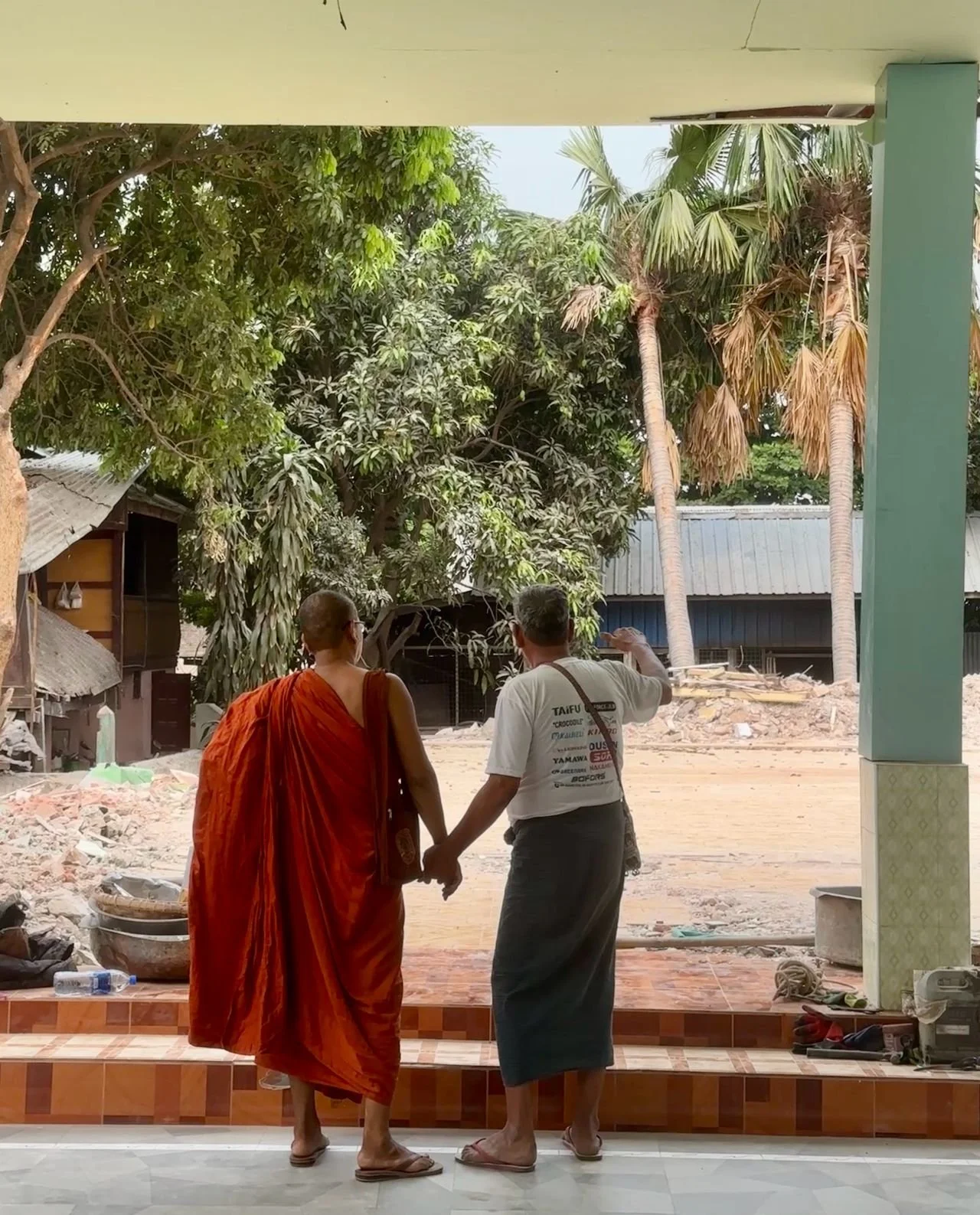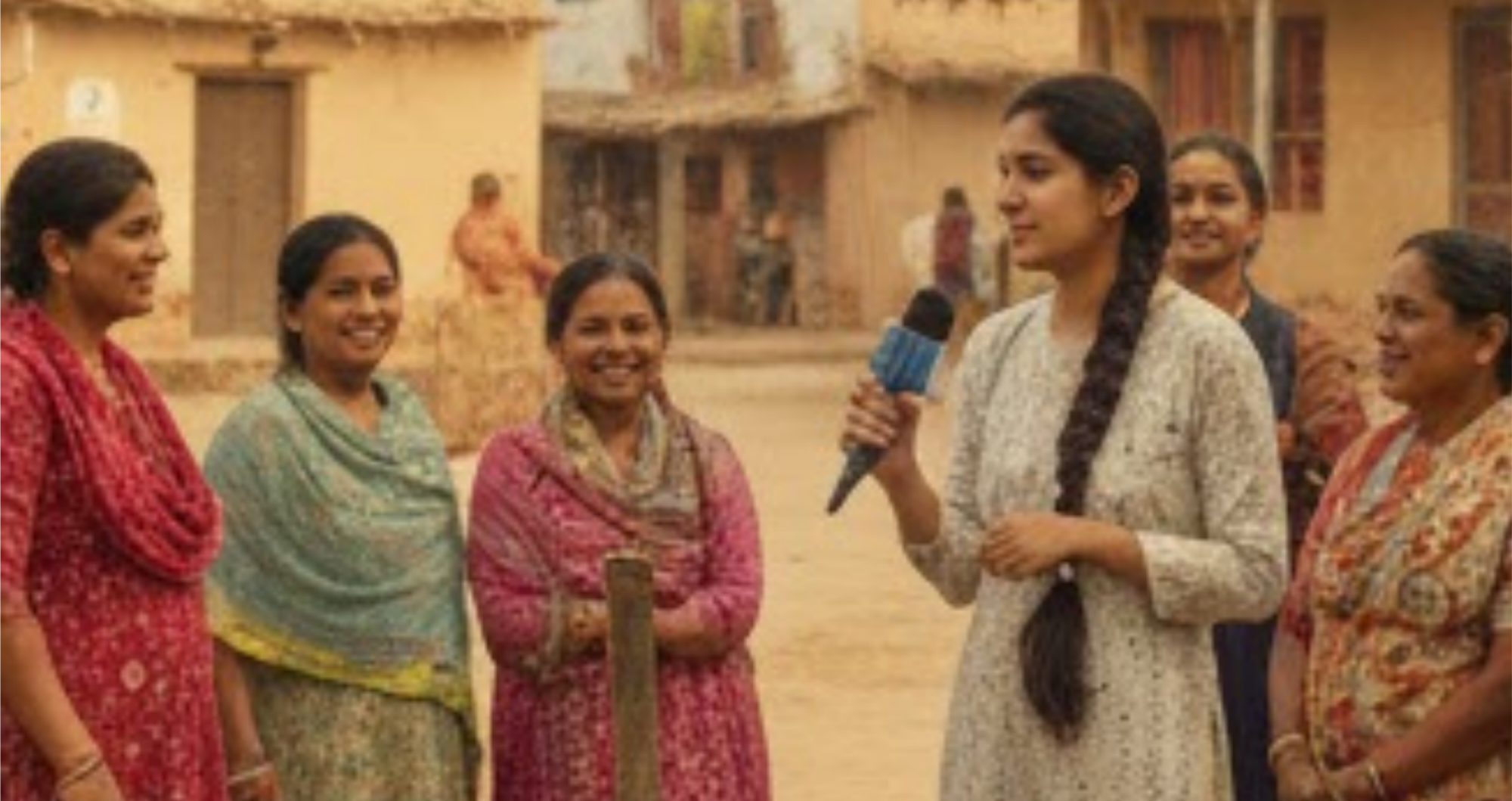Written By Michelle Helman
Reimagining a new path forward to build peace and health equity requires a design process that turns justice-driven values into actionable ideas and outcomes, and ensures that well-meaning initiatives do not have negative impacts. Design is a practice that supports problem-solving, planning, and creating meaning (Papaneck, 1972). This practice applies to the creation of everyday products, as well as the development of social change-related activities, including peacebuilding efforts and health systems. “Design has evolved from a process of making into a strategic practice with the potential to reshape human social systems and services,” (Joyce, 2023, p. 47). However, as scholar-practitioners like Sasha Costanza-Chock (2018) have emphasized, when design happens without the product user involved in the design process, it can unintentionally reproduce systems of inequity, further marginalizing those who are already disadvantaged by structural oppressions.
In this article, I present a process of collaborative design (also referred to as “co-design”) to demonstrate how it is a fundamental concept and a model for social transformation and change. In short, collaborative design is a process done with, rather than for, the community utilizing a variety of methods, one of which is highlighted here. This work is informed by my doctoral research and peace innovation project, and I draw inspiration from existing research on design, from women’s pockets to breast pumps, as well as my previous research experience and consulting practice supporting organizations to navigate conflict and culture change processes.
Design as a Concept and a Practice
In 2018, a study by Diehm and Thomas revealed that only 10% of pants pockets designed for women can fit a hand that otherwise fits in 100% of pockets designed for men. In other words, women’s pockets are designed to be significantly smaller than men’s pockets. While the issue of pocket sizes may seem trivial to some, it serves as a simple yet telling example of how design decisions can reflect and reinforce inequities. In contrast, the Make the Breast Pump Not Suck Project (n.d.) intentionally addressed the structural disadvantages and barriers that many brown, black, queer, and other marginalized parents face with breastfeeding. The project, as a hackathon and policy summit, served to reimagine the breast pump and to develop better pumps and support systems for breastfeeding parents, which fostered equal access to support their children to grow and flourish (D’Ignazio, n.d.; Make the Breast Pump Not Suck, n.d.). The project’s innovative approach was rooted in design justice and demonstrates how an equity-centered design model can effectively impact a social justice and health equity issue such as breastfeeding.
Design justice is an approach and social movement that offers a set of guiding principles that recognize how traditional design practices can perpetuate inequities, marginalizing those burdened by structural oppressions (Costanza-Chock, 2020; Design Justice Network, 2018). Key design justice principles include centering the voices, experiences, and knowledge of those who are directly impacted by the issue or opportunity, viewing the role of the designer as a facilitator rather than an expert, and prioritizing design’s impact on the community over the intentions of the designer (Design Justice Network, 2018). Design justice is a powerful model for social transformation and change, and the basis of my doctoral research study.
Drawing inspiration from the design justice principles and scholarship that suggests design justice can be utilized as a theoretical framework (Costanza-Chock, 2018; Design Justice Network, 2018), I developed an adapted design justice framework to guide my doctoral research study and peace innovation project. Specifically, I adapted the principles into open-ended questions and aligned them with a four-phase design model, which served as the research methodology. The four phases included context assessment, insight generation, activity planning, prototyping and implementation, and an evaluative debrief.
This model was used to guide an iterative research process and, simultaneously, served as a peace innovation project conducted in partnership with the organization Green String Network (GSN) detailed below. Integrating the design justice framework ensured that GSN team members were centered as collaborators or “co-designers” throughout the research process, rather than “participants” or mere research subjects. This enabled us to explore the role of the design justice framework in supporting an organizational change process within a peace and health context (Helman, 2025).
Designing Organizational Culture Change
GSN is a non-profit organization in Kenya that aims to end cycles of violence and build peace through engaging their Wellbeing and Resilience (WebR) framework to promote trauma-informed, community-based healing and connection (Green String Network, 2024). As GSN worked to digitize their programming by building a peace and health technology platform called Ustawi, meaning “to thrive” in Swahili, we applied the design justice framework to guide them in navigating their organizational change process and address necessary shifts in their leadership, decision-making, and policymaking processes.
Engaging the design justice framework first enabled us to connect, build trust, and assess GSN’s context to identify their needs, goals, and challenges. Through an iterative process, we generated insights based on the assessment findings to develop activities aimed at supporting GSN in achieving their goals. During the project implementation phase, we faced unforeseen events that forced us to rapidly adapt our plans. The design justice framework remained a stable and consistent base for us to navigate the change, engage peer-support efforts, and enhance a policymaking process that informed GSN’s network governance approach (Helman, 2025).
The design justice framework also provided guidance for us to more explicitly engage GSN’s WebR framework, which is rooted in Indigenous African traditions. We did so by engaging design justice principle ten, “Before seeking new design solutions, we look for what is already working at the community level. We honor and uplift traditional, indigenous, and local knowledge and practices,” (Design Justice Network, 2018). In practice, this looked like co-facilitating a generative space for dance, storytelling, and related activities that promoted nervous system regulation and connection. Notably, GSN draws from Indigenous African traditions of Ubuntu as it relates to their work addressing mental health challenges through interconnectedness, shared humanity, and relationships (Bila, 2024; Jansen et al., 2024; Waterkeyn, 2023). In evaluating our experience, we came to understand that we inadvertently intertwined the design justice framework with GSN’s WebR framework, and that this connection was essential for us to pivot and engage a co-design process amidst unanticipated change.
We also developed a digital illustration (Figure 1) which portrays the story of our collaborative, co-design approach, and depicts our experiences and process of engaging the design justice framework. Specifically, the research findings demonstrate the utility of the design justice framework as a tool to aid in facilitating organizational culture change processes, especially when engaged with local context and culture (Helman, 2025).
Figure 1. Peace and Healing: Our Collaboration Story. The digital illustration was co-created by M. Lethome, Wairimu, D. Wachira, E. Kariuki, and highlights the collaboration between Wairimu Mary and Michelle Helman to facilitate the co-design process.
Design to Reimagine a New Generation of Peace
Design happens, whether it is designing a woman’s pants pocket or a breast pump or a peacebuilding program. Despite valiant and enduring efforts, organizations working to address health inequity, conflict, and injustice face growing challenges, and while their use of design approaches is commendable, they can often fall short of being truly transformative. Simply adding design tools or including the word “equity” in a strategic plan does not guarantee meaningful change. Furthermore, when design is treated as an add-on rather than integral to organizational culture, and when conflict limits adaptability, unintended harms are often reproduced.
“…the ‘reimagined’ state is one in which organizations engage in design processes that are collaborative and prioritize relationships and connection to promote equity, peace, and justice.”
To incorporate the design justice framework, organizations can begin by first reflecting on their intentions, their role, and their “why” (i.e., why are we doing what we are doing?). Additionally, consider who is the primary “recipient” or “user” of the product, process, or program, and reflect on the existing relationship with them and how that might be more collaborative, mutually beneficial, and reciprocal. Ask them what they think. Engage in dialogue. Clarify their collective hopes and dreams to envision equitable and just futures. In essence, the “reimagined” state is one in which organizations engage in design processes that are collaborative and prioritize relationships and connection to promote equity, peace, and justice.
While the design justice framework is not itself a blueprint for transformation, applying it can provide essential, structured support from which to innovate and imagine new ways of being and doing amidst unanticipated change prevalent in our daily experiences. Reimagining “traditional” design approaches – which may result in unintentional, yet inequitable pockets, or worse harms – is essential to build peace and health equity. In the work with GSN, the design justice framework supported us in maintaining an internal focus to ensure organizational agility and responsiveness when navigating an unexpected change process. Additionally, it highlighted how design can be driven by values of equity and justice and harnessed to create an experience where resilience, healing, and wellbeing become standard indicators of peace.
In this way, the design justice framework can support re-imagining possibilities for peace and provides a much-needed process that enables co-design and innovation rooted in relationship, connection, and collective care. From pockets to peace, the design justice framework can drive change and support reimagining equitable, just, and peaceful futures.
Michelle Helman, MA, is a doctoral candidate and Fellow in Peace and Health Innovation with the Global Center of Peace Innovation at the United Nations Mandated University for Peace on Huetar Territory in Costa Rica, and an independent consultant passionate about co-creating design spaces that foster connection and transformation; learn more at michellehelman.com
Notes and acknowledgements
Gratitude to the Peace Leadership Collaborative for their editorial support and to Jill Huinder for proofreading the initial article draft. No part of this document may be used or reproduced in any manner for the purpose of training artificial intelligence technologies or systems.
References
Bila, N. (2024, February 23). UP EXPERT OPINION: Ubuntu as a solution to mental illness challenges. Department of Institutional Advancement, University of Pretoria. https://www.up.ac.za/department-of-institutional-advancement/news/post_3210600-up-expert-opinion-ubuntu-as-a-solution- to-mental-illness-challenges
Costanza-Chock, S. (2018). Design Justice: Towards an Intersectional Feminist Framework for Design Theory and Practice (SSRN Scholarly Paper 3189696). https://papers.ssrn.com/abstract=3189696
Costanza-Chock, S. (2020). Design Justice. MIT Press. https://designjustice.mitpress.mit.edu/
Diehm and Thomas (2018). The Pudding. https://pudding.cool/2018/08/pockets/
D’Ignazio, C. (n.d.) The Make the Breast Pump Not Suck Hackathon. http://www.kanarinka.com/project/mit-breast-pump-hackathon/
Design Justice Network. (2018). Design Justice Network Principles. Design Justice Network. https://designjustice.org/read-the-principles
Green String Network. (2024). The Green String Network: An introduction. Green String Network.
Helman, M. (2025). From Pockets to Peace: A Letter for Designers. Learn X Design Series Conference Proceedings. DOI forthcoming Dec. 2025.
Jansen, S., Niyonzima, J. B., Gerbarg, P., Brown, R. P., Nsengiyumva, A., Niyonsenga, J., & Nsabimana, E. (2024). Evaluating effects of community-based social healing model on Ubuntu, mental health and psychosocial functioning in post-genocide Rwanda: Protocol for cluster randomized control trial. Trials, 25(1), 773. https://doi.org/10.1186/s13063-024-08632-6
Joyce, M. (2023). Designing Culture: A Call for Radical Thinking about Change and Design. Design Management Review, 34(1), 46–52. https://doi.org/10.1111/drev.12331
Make the Breast Pump Not Suck (n.d.). Our Values. https://makethebreastpumpnotsuck.com/
Papaneck, V.J. (1972). Design For the Real World: Human ecology and social change. Bantam Books.
Phillis, J. A. Jr., Deiglmeier, K., & Miller, D. T. (2008, Fall). Rediscovering Social Innovation. Essentials of Social Innovation. https://ssir.org/articles/entry/rediscovering_social_innovation
Waterkeyn, J. A. V. (2023). Recreating Social Capital through nurturing Ubuntu in Community Health Clubs for disease prevention. Medical Research Archives, 11(11). https://doi.org/10.18103/mra.v11i11.4460
Issue 03 | Reimagining a New Generation of Peace
-

No Planet, No Peace: Reimagining Peacebuilding through Planetary Stewardship
-

When the Earth Shook, Faith Held Us Together
-

Reimagining Peace through Rumi’s Lenses: A Voyage into Poetic Wisdom, Politics, Diplomacy, and the Transcendental
-

An Alternative Peacebuilding Vision in a Post-Liberal Era
-

Sing My Soul
-

Reimagining a New Generation of Peace with Servant Leadership and Nonviolent Communication
-

Threading the Future: Mentoring the Next Generation of Peacebuilders
-

If We Can Teach AI to Practise Empathy: Nonflict and a Generation of Peacemakers
-

Peace Leader Spotlight | From Grandmother’s Legacy to Global Peacebuilding: Issah Toha Shamsoo
-

Young Leaders for Peace: Meeting the Moment through Youth Peace Leadership Development at the University for Peace
-

Reimagining Peace Through Young Voices in India: Spotlight on Women Journalists and Their Stories
-

Peace Dwelling and Belonging: Stan Amaladas on rethinking what it means to live well with each other
-

Pockets and Peace Design: A collaborative design framework to advance health equity and build peace
-

From Shrinking Spaces to Shared Strategies: Insights from Central Asia on how to build collective action for conflict prevention and peacebuilding
-

From War Memories to Peace Encounters: Constructive Usage of Veteran Experience
-

Call for Submissions | Issue 04


